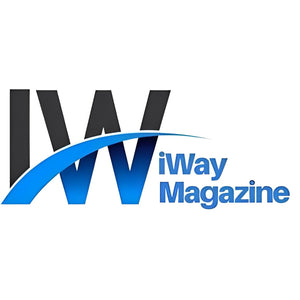Beauty tech: Estée Lauder, L'Oréal embrace inclusivity and personalisation
Beauty tech may be most closely linked in many consumers’ minds to virtual try-on, but 2023 is a year in which companies are launching more ambitious initiatives. They’ll be designed to boost inclusivity, ramp up personalisation and take salon-tech-at-home devices into new beauty categories.

And companies have hit the ground running this month so far. The Estée Lauder Companies (ELC) UK & Ireland on Wednesday launched a Voice-Enabled Makeup Assistant (VMA) application. It said this is a first-of-its-kind, artificial intelligence-powered mobile app to help visually impaired users more easily and confidently apply make-up.
There are more than 2 million people living with sight loss in the UK alone, according to National Health service figures, and 340,000 are registered as blind or partially sighted. The company said visually impaired consumers told it they needed technology designed to make them more able to independently apply make-up with confidence.
So how does it work? VMA’s smart mirror technology is driven by ELC’s AR and AI capabilities and was developed using machine learning. It uses voice instruction tech to assist the user in make-up application. Users also get audio feedback and tips on whether their lipstick, eyeshadow, or foundation is evenly applied.
It can assess the uniformity and boundaries of application and coverage, identify areas on the face that may require more accurate application and audibly describe where touch-ups may be needed. The company said it’s “committed to building innovative technology solutions that make beauty truly inclusive to everyone”.
The app will initially be available via Apple's App Store in the UK and at esteelauder.co.uk for the Estée Lauder brand. It should launch on the Google Play store within the year and across other ELC brands and markets in the near future.
INCLUSIVITY AND S,LON-STYLE GADGETS
The VMA launch comes after the recent CES show in Las Vegas included a number of interesting new tech introductions. France’s L’Oréal, for instance, unveiled two new technology prototypes with one also focused on inclusivity. Its new HAPTA prototype was billed as “the first hand-held, ultra-precise computerised make-up applicator designed to advance the beauty needs of people with limited hand and arm mobility”.

It targets the estimated 50 million people globally with limited fine motor skills and uses tech originally created by Verily to stabilise and level eating utensils for people with limited hand and arm mobility.
It has built-in smart motion controls plus customisable attachments for an improved range of motion, increased ease of use for difficult-to-open packaging, and precision application that’s otherwise hard to achieve. The levelling device will be piloted by the Lancôme brand this year, first with a lipstick applicator followed by additional make-up applications in the future.
Inclusivity is clearly going to be a key theme running through tech developments this year. But it’s not the only theme. L’Oréal Brow Magic, also unveiled at the show, is more about personalisation and replicating the salon experience. It’s claimed to be “the first at-home electronic eyebrow make-up applicator that provides users with customised brow looks in seconds”.
It was developed in a link with tech company Prinker, a pioneer in printed, non-permanent tattoos, and “makes professional-like results accessible at home”. L’Oréal must see a big future in this as it has also acquired a minority stake in the company.
Using 2,400 tiny nozzles and printing tech with up to 1,200 dpi resolution, it comes a part of a long line of ‘salon-results-at-home’ devices but really is a first of its kind for brows.
Via the beauty giant’s Modiface AR technology, it scans the user's face and makes recommendations for microblading, micro-shading, or filler effects.
Key to all this is the outside partners it’s working with and Guive Balooch, L'Oréal Global Head of Research and Innovation's Tech Incubator, said: “Often, we find a brilliant technology that is being applied to something outside the beauty realm. Combining L'Oréal's heritage of beauty with these advanced technologies allows us to create entirely new beauty gestures—reimagining the original technology, and the traditional beauty experience, in the process.”
PERSONALISATION
Meanwhile, K-Beauty giant Amorepacific continued its award-winning performance at CES as it showed the Authentic Color Master by Tonework. This is a smart manufacturing system solution for customised make-up products using AI and robot arms.
It precisely analyses the tone of the face via AI algorithms and uses robotics to make tailored foundations and lip products. It provides optimised colour recommendations based on facial recognition tech and colour science research.

And the firm’s Cosmechip was another award-winner that took personalisation even further. It’s designed to make personalised skincare products by using active chips containing effective ingredients. Featuring microfluidic channel tech developed by the firm, the device creates uniformly combined formulations using a small amount of water and effective ingredients.
Consumers can choose different active chips based on their skin condition and preference. And they can even use drinking water at home to make customised products. The chips can be stored stably for a long period too because they’re prescribed with anhydrous ingredients.
